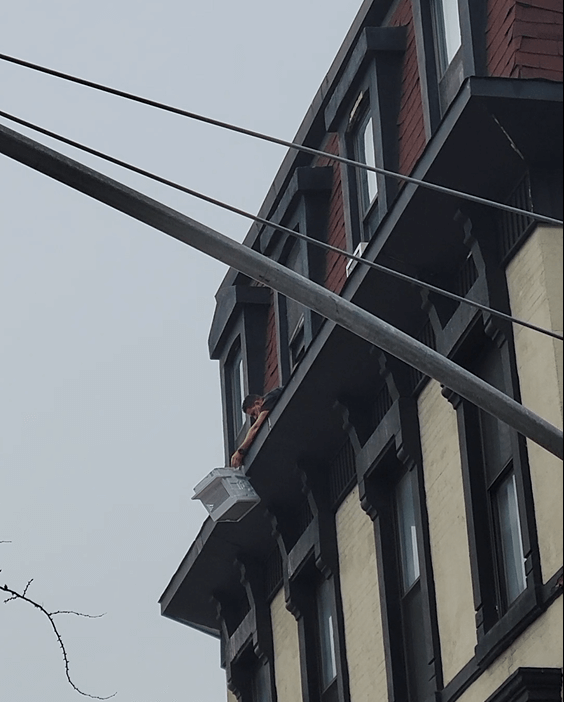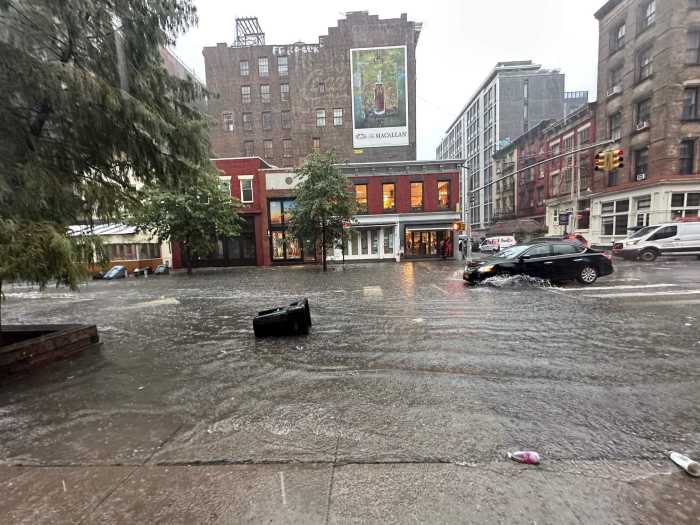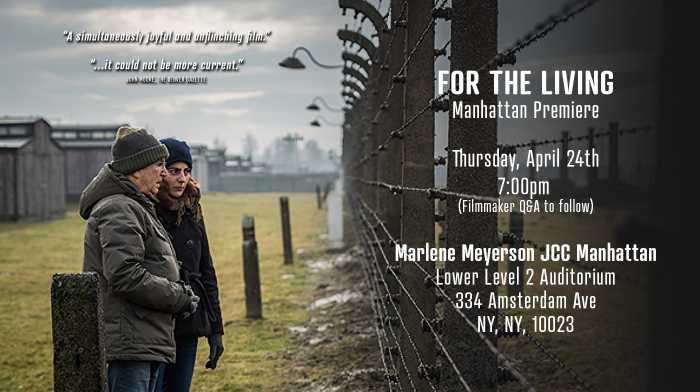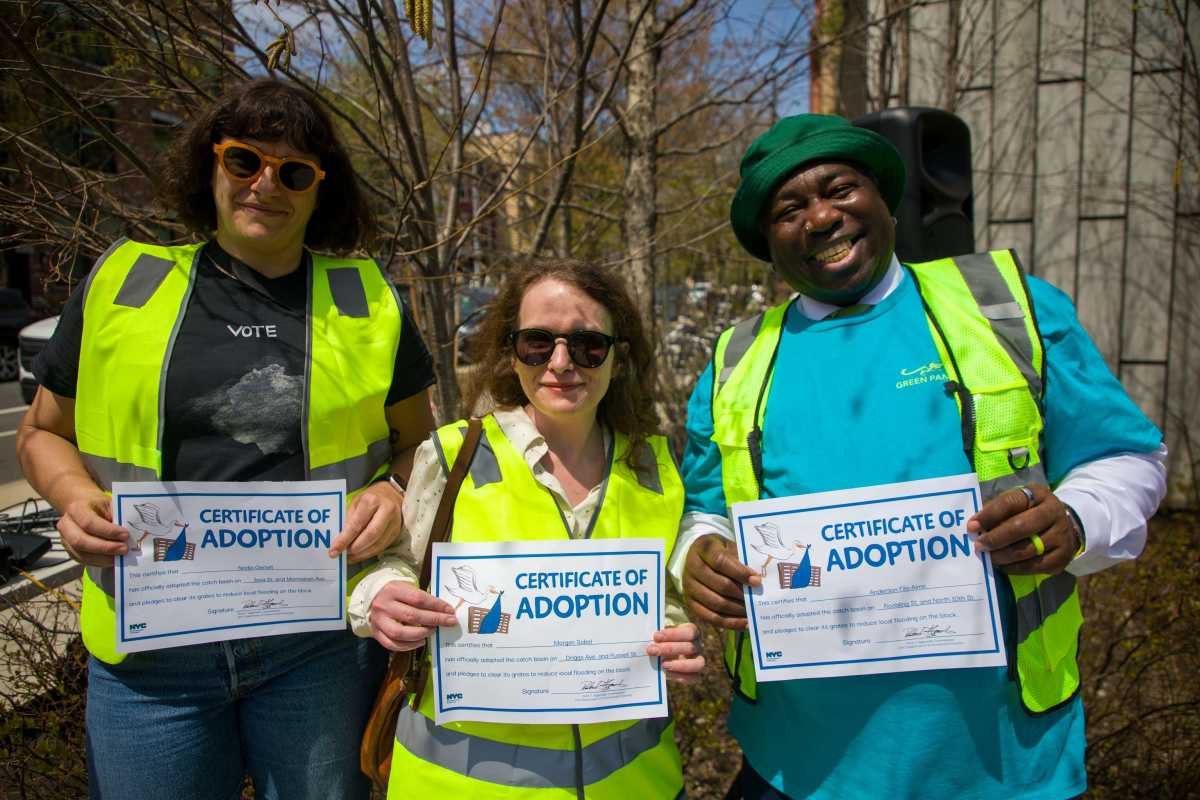As New Yorkers walk through canyons made of tall buildings, some find themselves with a persistent fear of a rogue object falling atop their heads — potentially causing serious harm, or even death.
Luckily, lawmakers have gone to great lengths to stop certain types of falling debris, namely the potential for scrap materials falling from unsafe building façades.
The biggest such push came in 1979, when a 17-year-old freshman student at Barnard College, Grace Gold, was killed by a loose piece of masonry on Broadway and 115th Street — prompting the passage of “Local Law 11” that led to sidewalk sheds (commonly known as scaffolding) to be erected throughout the city anytime a building fails to pass stringent safety inspections.
Since then, the low-hanging sidewalk sheds have become as ubiquitous as skyscrapers in the Big Apple — with estimates hovering around 9,000 active sheds hovering above New York City sidewalks.
While that approach has largely squashed fears of unsafe building façades, there are still plenty of examples of loose objects barreling from atop buildings towards the earth below — from unsecured law chairs to scrap metal stored on roofs and patios.
Submitted by Alina Abidi
As legal eagles with the law firm Aidala, Bertuna & Kamins point out, this is not only something that can happen, but something that does — often with terrifying consequences.
“Unfortunately for pedestrians, this kind of scenario can become a reality,” the lawyers say. “It only takes a second for something overhead to come crashing down.”
The biggest potential worry, they say, comes when taller buildings require movers to shoehorn larger objects into windows using cranes or scaffolding, whenever they are too big for standard rides up in-building elevators.
“The denser and taller buildings in an area become, the more potential there is for falling objects. Both new construction and renovation projects create situations where heavy items may be lifted outside of a building or stored on a rooftop or scaffolding,” the lawyers warn.
Submitted by Julia Boms
In the most serious cases, entire cranes can collapse — as happened when a construction crane atop a high-rise building in Midtown Manhattan was engulfed in flames and broke apart in July, injuring 11 people. When the crane operator noticed the flames at around 7:30 a.m., but couldn’t put it out, he fled to safety — only to watch the equipment, sitting 45 stories high, fall apart and strike neighboring buildings.
Submitted by Jimmy Farrington
In other cases, it may be something as simple as a window-mounted air conditioning unit that is not installed correctly — sending mental boxes, weighing around 45 pounds, hurtling towards the sidewalks, and anyone unfortunate enough to be caught standing there.
Submitted by Camille Manzana
And it’s not just A/C units either — as sometimes, windows of new buildings are not properly installed, and New Yorkers are forced to dodge falling glass, like they dodged the oncoming trolleys of yesteryear.
“Sometimes falling objects are the result of a machinery failure. Other times, it can be human error that pushes items off a ledge or off of scaffolding,” the lawyers say. “A hammer, for example, could cause very serious injuries, even if it was getting used to put shingles on a second-story roof.”
Submitted by Jessica Dickey
While those incidents led to a renewed push to ensure construction teams have proper safety measures in place, there is not always an easy person to blame, either.
In some cases, New Yorkers have been forced to take cover as ice and compact snow are loosened from the side of buildings, and smash onto the sidewalk below when the weather warms.
Submitted by Colette Dee
But one thing is clear: living in the concrete jungle makes it necessary to keep aware of your surroundings, always knowing what’s in front of you and behind you — and, as we’ve learned, above you.
Like what you see? Sign up for our amNY x What is New York email newsletter to receive a new collection of viral clips, exclusive interviews, history trivia, and unique “only in NY” stories.
Submitted by Sabrina Bangladesh
Submitted by Aria Sohseni
Submitted by Nima Rad
Submitted by Stephen Crooks
Submitted by Julie Verardi
Submitted by Grace Chiao
Read more: Lower Manhattan Tenants Sue Over Unsafe Living Conditions




































